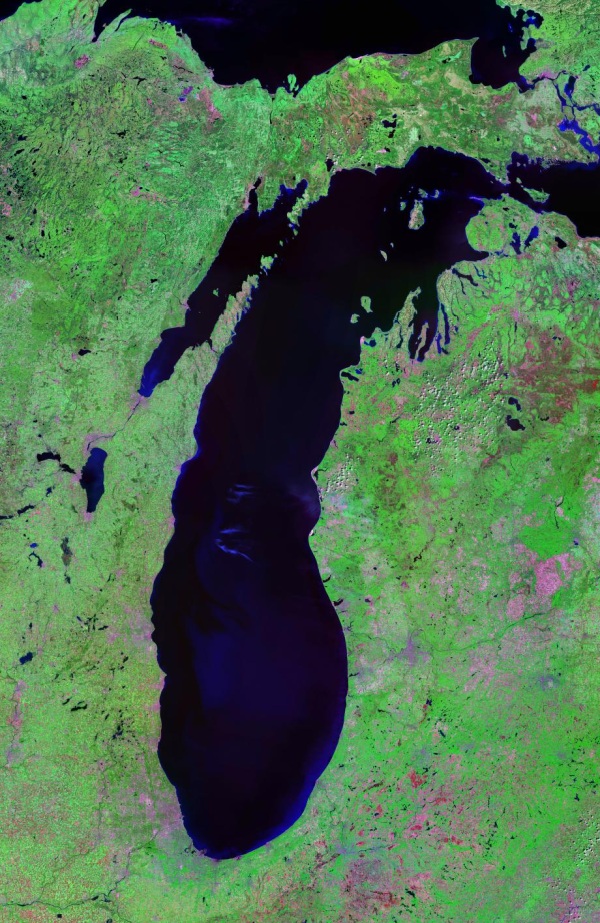Lake Michigan’s tertiary consumers are the apex predators in the food web, playing a crucial role in maintaining the balance of the ecosystem. These top-level consumers feed on secondary consumers, controlling their populations and ensuring the overall stability of the aquatic environment.
Primary Tertiary Consumers in Lake Michigan

The primary tertiary consumers in Lake Michigan include:
- Lake Trout (Salvelinus namaycush): A native species that was nearly eliminated by sea lampreys but has been reintroduced through stocking and lamprey control efforts.
- Chinook Salmon (Oncorhynchus tshawytscha): A Pacific salmon species stocked as a trophy fish and to control alewife populations.
- Coho Salmon (Oncorhynchus kisutch): Another Pacific salmon species introduced to the Great Lakes, reproducing in many streams but sustained through hatcheries.
- Walleye (Stizostedion vitreum): A carnivorous night feeder that eats fish, insects, crayfish, snails, and mudpuppies.
- Burbot (Lota lota): An elongated, cylindrical freshwater codfish that feeds on fish, insects, crayfish, snails, and mudpuppies.
Impact of Invasive Species on Tertiary Consumers

The introduction of non-native species has significantly impacted the tertiary consumers in Lake Michigan. Some of the key invasive species and their effects include:
- Sea Lamprey (Petromyzon marinus): An aggressive, non-native parasite that fastens onto its prey and rasps out a hole with its rough tongue, significantly impacting native fish populations.
- Round Goby (Neogobius melanostomus): An invasive species that feeds on bivalves, crustaceans, insects, and small fish, altering the food web dynamics.
- Zebra and Quagga Mussels (Dreissena polymorpha and Dreissena bugensis): Filter-feeders that remove huge quantities of plankton, affecting the food supply for native fish.
Effect of Tertiary Consumers on the Food Web
Tertiary consumers play a crucial role in the Lake Michigan food web:
- Energy Flow: Tertiary consumers transfer energy from lower trophic levels, as they feed on secondary consumers.
- Population Control: Tertiary consumers help regulate the populations of secondary consumers, maintaining a balance in the ecosystem.
- Ecosystem Stability: The presence of tertiary consumers contributes to ecosystem stability by controlling the populations of smaller fish and maintaining the food web structure.
Additional Resources
For more information on Lake Michigan’s food web and the role of tertiary consumers, check out these resources:
- Lake Michigan Food Web Diagrams: NOAA’s Great Lakes Environmental Research Laboratory provides detailed food web diagrams for Lake Michigan, highlighting the interactions between various species.
- Food Web Lessons: Educational resources, such as the Lake Michigan Food Web and Sea Lamprey lesson plan, are available to teach students about food web concepts and the impact of invasive species.
Directory and Contact Information
- NOAA Great Lakes Environmental Research Laboratory: 4840 S. State Road, Ann Arbor, MI; Phone: 734-741-2235; Website: www.glerl.noaa.gov.
- Michigan Sea Grant: Website: www.michiganseagrant.org; Phone: 734-647-0765.
Hours and Rates
- NOAA Great Lakes Environmental Research Laboratory: Office hours: 8:00 AM – 4:30 PM (EST); No admission fees or rates for educational resources.
- Michigan Sea Grant: Office hours: 8:00 AM – 5:00 PM (EST); No admission fees or rates for educational resources.
Value and Cost
- Ecological Value: The presence of tertiary consumers in Lake Michigan maintains ecosystem balance and supports biodiversity, which is invaluable for the environment and human well-being.
- Economic Value: The fishing industry and tourism in Lake Michigan generate significant revenue, with the value of recreational fishing alone estimated at over $7 billion annually.
References
- Lake Michigan Food Web. (2009). Wikimedia Commons. Retrieved from https://upload.wikimedia.org/wikipedia/commons/a/a7/Lake_Michigan_Food_Web.pdf
- Lake Michigan Food Web. (n.d.). NOAA Great Lakes Environmental Research Laboratory. Retrieved from https://www.glerl.noaa.gov/pubs/brochures/foodweb/LMfoodweb.pdf
- Lake Michigan Food Web and Sea Lamprey (LP). (n.d.). BIAquariumSTEM. Retrieved from https://www.biaquariumstem.org/lake-michigan-food-web-and-sea-lampery-lp.html
- Food Chains and Webs. (n.d.). Michigan Sea Grant. Retrieved from https://www.michiganseagrant.org/lessons/lessons/by-broad-concept/life-science/food-chains-and-webs/
- Great Lakes Food Web Diagrams. (2022). NOAA. Retrieved from https://www.noaa.gov/great-lakes-food-web-diagrams
